Work and play by the sea
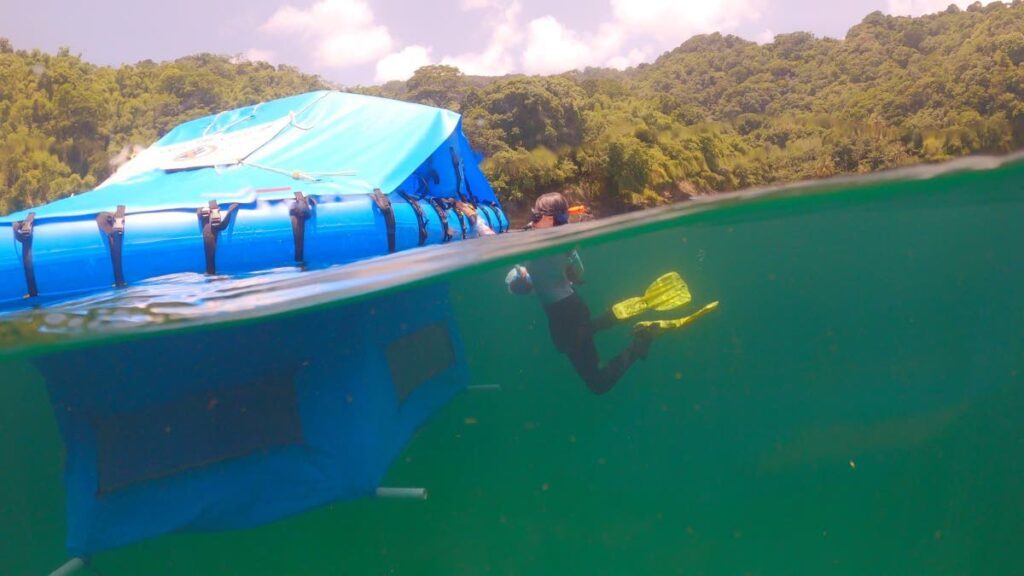
People are hard at work in vacation places. Fortunate are those who vacation and are allowed into other working lives, other enterprises. Pat Ganase visits Charlotteville, centre of the Northeast Tobago Man and the Biosphere Reserve.
It is late August in Charlotteville. The rising sun lights up Campbleton. Rainbows from the misty horizon dance over Booby Island. The sea is a pond, calm, clear to the bottom; its channels of sand shimmer between boulders and bouldering corals.
This is our holiday place on the northwest coast of Tobago, where the water is warm, the rainforest resplendent and the sunsets startling. Here is the heartland of northeast Tobago, as different as can be imagined from southwest Tobago.
Walk along the beach from the Man-o-War Bay Cottages to the village. Check the heron keeping an eye on you while chasing a crab on the sand. Pass the end of Bay Road, looking for what the sea washed up overnight: maybe a sea urchin, maybe polished sea-glass chips. Duck under ancient almonds whose roots sip the briny earth and branches hang heavy over the shore.
Fishermen are at their boats, some returned with redfish from a night of banking, some gassing up to set out. At the fishing depot, you are told come back later.
Maurice the calabash artist is at work on some new gourds, gifts from friends in Central Trinidad. Priya always has early customers at her vegetable shop; she procures breadfruit, silk fig, dasheen from the area.
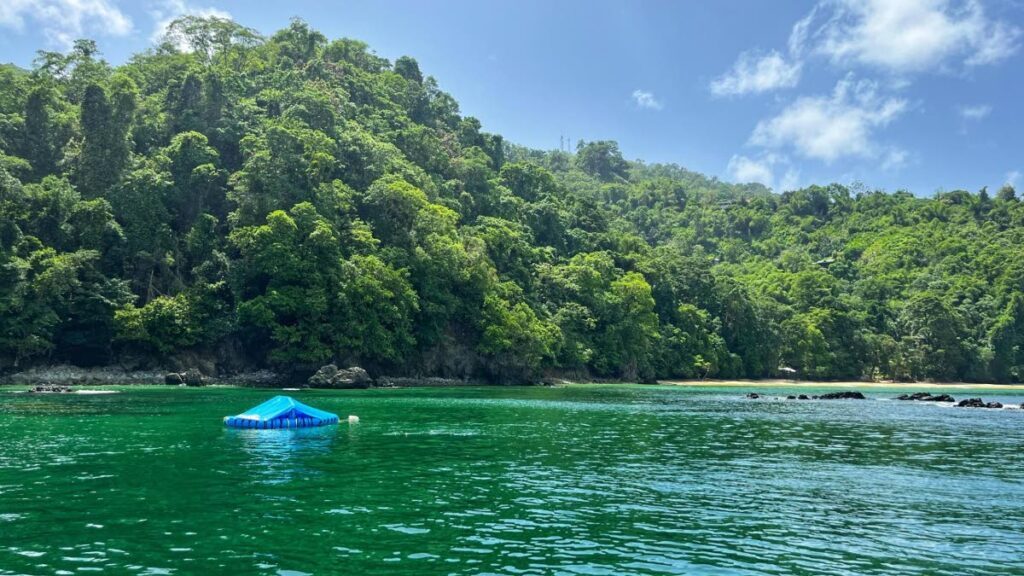
There’s another knot of villagers at the junction of jetty and grocery. Now repainted bright blue, the tiny supermarket has everything you need: bread and beer, rum and rice, cheese and ice cream.
Look up towards the hills and you’ll see a village laid out with purpose. The plantations of sugarcane and cocoa circled the pleasant bowl that became the town at the edge of a natural deepwater bay. A grassy park is the centre of the village; on one side are police station, health centre, nursery school, churches and cemetery. The Charlotteville Public Library is a welcoming oasis in any not-very-busy day, offering newspapers, books and magazines and free Wi-Fi.
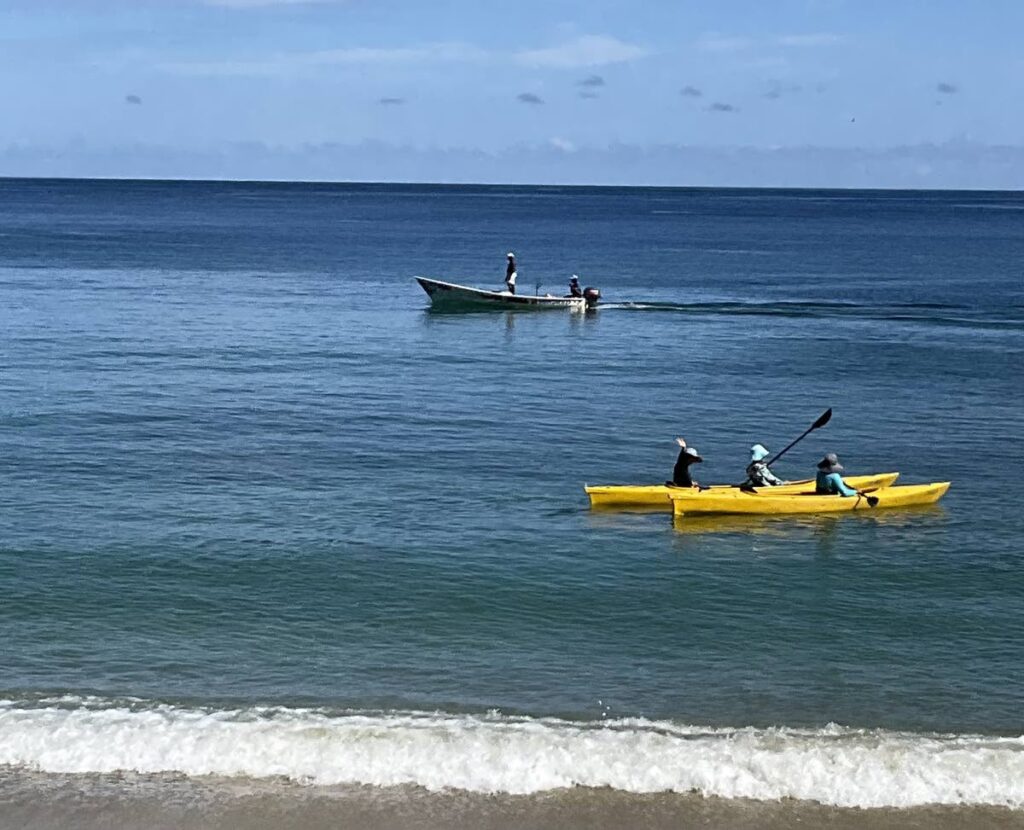
If you continue where the road rises above the curve of the bay, you’ll cross a forested patch – look out for Trinidad motmots – and arrive at Pirates Bay, one of the pristine beaches that encircle northeast Tobago. Beaches are ephemeral places requiring nothing but your presence.
Another day, we’ll take the kayaks across the bay. Paddle between the sailing boats and yachts anchored at the moorings placed there by the foresight of the Environmental Research Institute of Charlotteville (ERIC), which piloted the proposal for the designation of the Man and the Biosphere Reserve conferred in 2020.
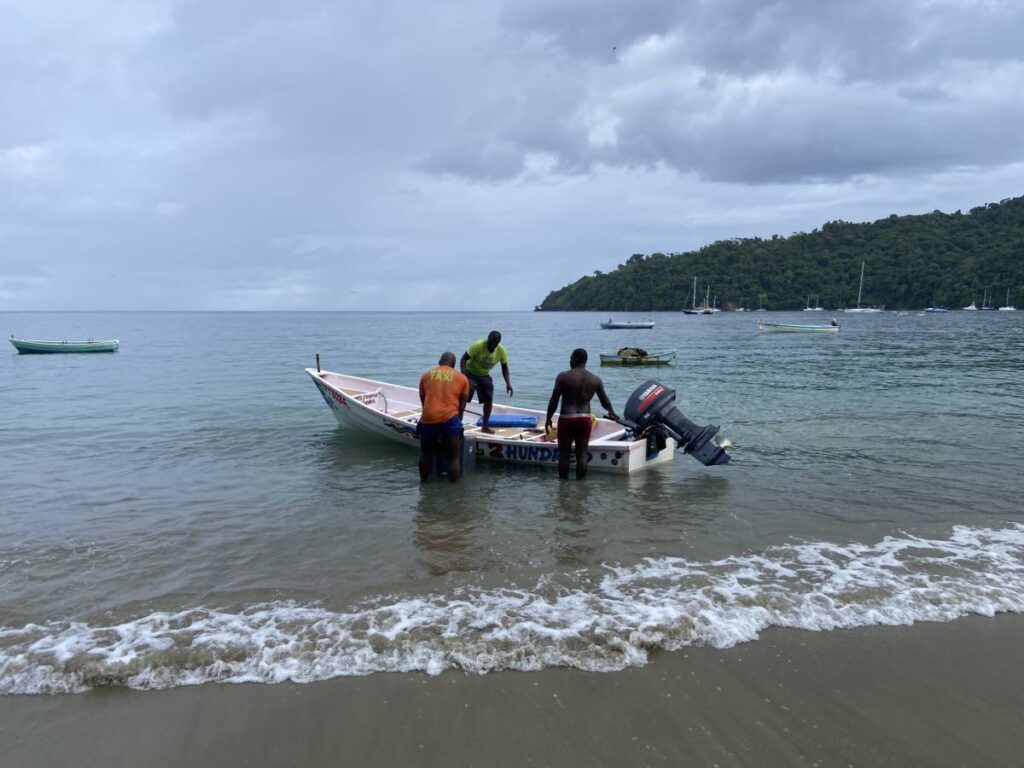
We come here to the Man-o-War Bay Cottages because only the beach separates us from the sea. The accommodation is rustic but sufficient for rest and leisure.
There is leisure here even among those hard at work. Leisure is everywhere in the understated, methodical delivery of tasks, the sanitation worker resting on his rake while clearing the beach, the artisan tooling his calabash, the fishermen scaling and filleting fish.
Sharon Benjamin, owner of a respected homestyle restaurant, hangs over her balcony to tell the story of her daughter, for whom Sharon and Phebs is named. No hurry, but her homemade ice cream is fabulous.
Yes, people do work in Charlotteville. We meet the librarian, Althea, walking under her umbrella from Campbleton.

The fishermen pulling the seine bring in a trough of young cavalli, great for a fry-dry, they say.
Now there is a growing cadre of researchers and scientists fostering other activities here. We meet a crew – Hannah, Lanya and Anjani – from the Institute of Marine Affairs who are creating a nursery for coral babies. Incredible and amazing, they are part of a team working on the MARIN programme to restore degraded reefs with coral spawn collected from healthy reefs.
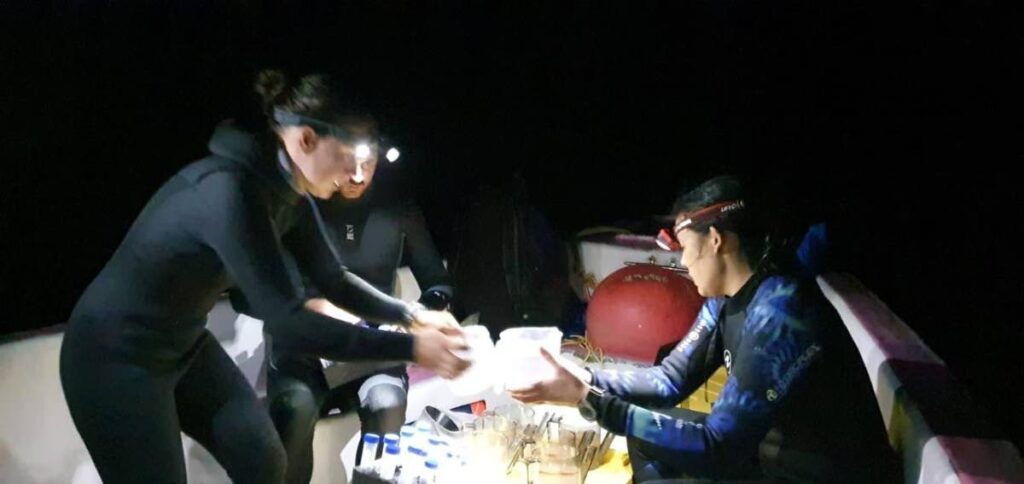
Shortly after full moon over the last four months, the researchers were diving to see which corals are spawning, a magical night-time underwater event like sparklers going off in a snowstorm.
The relatively pristine coasts around the north of Tobago hold special interest for the MARIN (Marine Resilience Initiative) project. Funded by bp (uk) through local partners bptt, MARIN aims to build marine resilience in Tobago in the following ways: to manage marine ecosystems against a future of unknowns (climate change); to restore coral reefs and seagrass; and to foster ocean awareness and advocacy in villages and communities.
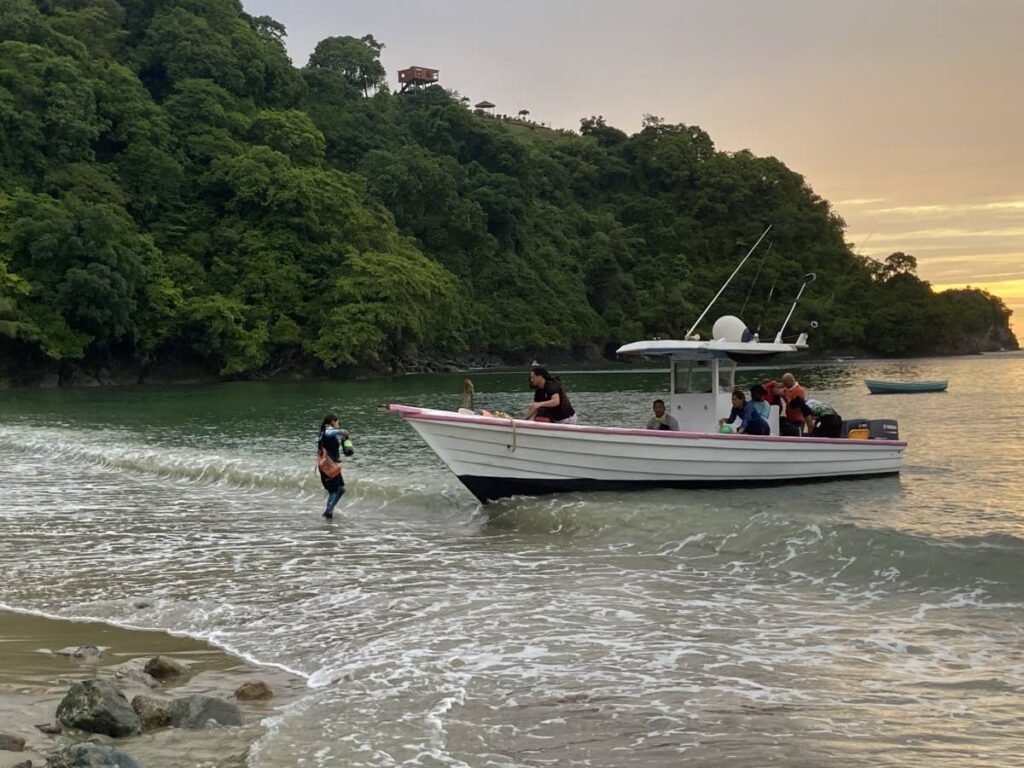
Local partners include the THA, Department of Marine Resources and Fisheries and marine monitoring and engineering firm Coastal Dynamics Ltd. ERIC is the community adviser and partner in the northeast. All partners benefit from training and information sharing in the coral-rearing and seeding process.
A significant consultant is Secore International, which is dedicated to the conservation and restoration of coral reefs – creating and sharing the tools and technologies to sustainably restore coral reefs worldwide. The MARIN Tobago team is working with Secore scientists from Curacao, developing experimental techniques to safeguard Tobago’s endangered coral species, among them the boulder star corals, of which the most famous must be the giant brain coral off Speyside.
The MARIN Tobago team selected northeast Tobago reefs for their relatively healthy species populations, and aim to plant viable coral babies on some sites that are not too affected by chronic conditions of water pollution.
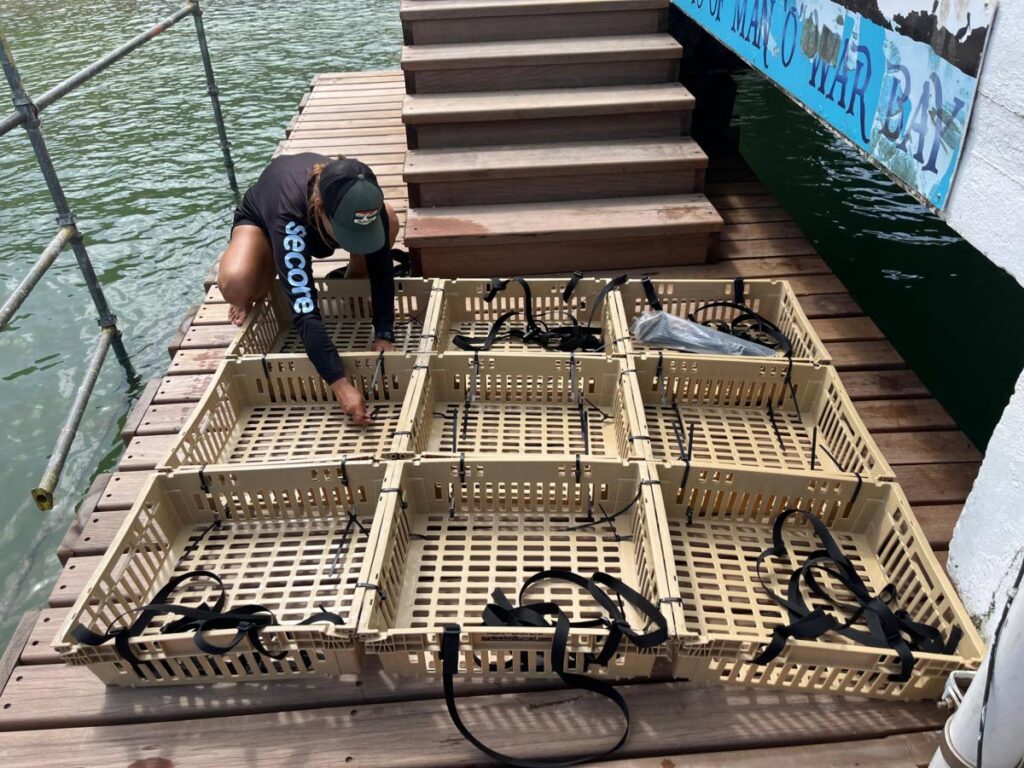
On the other side of the island, some coral reefs off Speyside suffered considerable coral die-off from the 2010 bleaching event; many reefs have not recovered. Some of the seeded coral units will go to these sites. It’s a long-term project, since coral spawning happens in the warmer months; and the season may be over for this year.
Curtis Antoine’s fishing vessel has been converted into a research vessel, apartment accommodation into a lab. And the beach is the doorway to the ocean for the study of the coral reefs and research into the regeneration of corals.
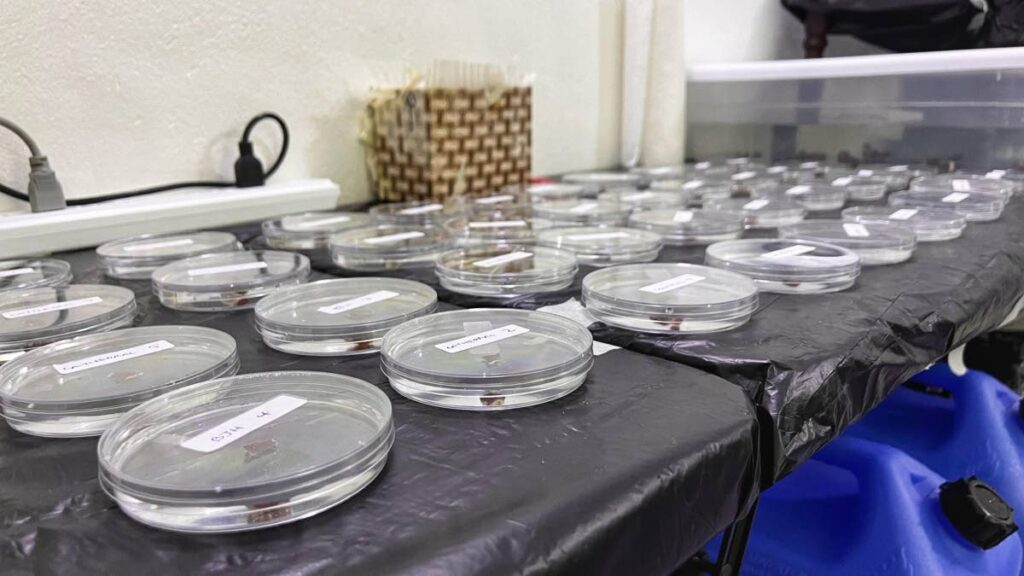
The project is funded for five years, but coral regeneration – ecology, habitat research and education – must continue for as long as it takes to grow harmony between land and sea dwellers. In the process, more and more people must come to appreciate ecosystems that extend from ridge to reef, and why Tobago needs corals.
The outreach to random walkers on the beach, fishermen, and especially to children and their families in the village has only just started. The project also expects to develop the protective network made up of marine resource users, government and management agencies collaborating on response planning for climate-related disasters such as heat stress or disease outbreaks.
At the end of the day, we walk on the beach, bathed in the light of a glorious sunset, ignorant of how the daily cycle, the tides and currents and humans affect the significant life underwater.

Comments
"Work and play by the sea"